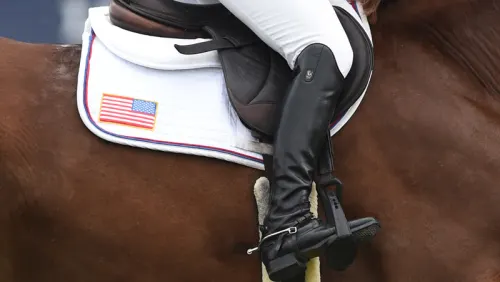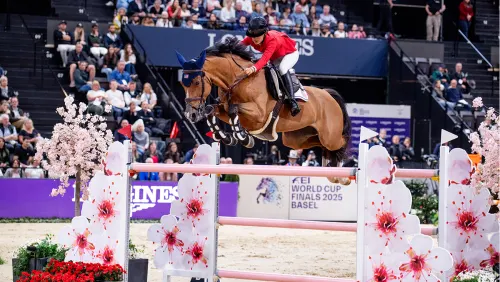The slate’s been wiped clean, and all points have reset to zero. The 2019 show season officially kicked off on Dec. 1, and with it are quite a few rule changes. You can visit the U.S. Equestrian Federation website for a full list of changes, but we’ve compiled a list of a few you’ll want to remember.
The Big One:
SafeSport has been a buzzword across showgrounds throughout the country, and starting Jan. 1, all USEF members 18 and older will be required to complete SafeSport Training in order to participate in any USEF-sanctioned activities. For members renewing on or after Dec. 1, there is a 30-day grace period to complete your training.
Dressage Details:
• An extraordinary rule change, which garnered a lot of attention at this year’s U.S. Dressage Federation Annual Convention (Utah), raised the minimum score requirement to qualify for a freestyle from 60 to 63 percent.
• The rider tests have been eliminated.
• Just as horses can’t compete in more than one licensed competition on the same day, a new rule states horses also can’t compete at a non-licensed competition on the same day as a licensed show.
• In order to compete at fourth level, horses must be a minimum of 6 years old.
• With evolutionary bridle designs hitting the market, a rule change pertaining to equipment considers a jowl strap to be a form of throatlatch, and it can be used to replace or in addition to a traditional throatlatch.
Eventing Extras:
ADVERTISEMENT
• An extraordinary rule change to Eventing Appendix 1 re-evaluated the wording used to describe expectations for each level. This came about after a competitor filed a protest to the USEF Hearing Committee because the competitor felt the cross-country course designer did not follow the specifications set forth in the appendix. New language makes the questions allowed at each level clearer.
• Fashionistas can rejoice as brown helmets or helmet covers are now permitted in dressage and show jumping.
• Hoof wraps that do not extend past the hairline of the hoof are now permitted, making life a little easier for barefoot horses.
• An extraordinary rule change added specifications for eventing showcases and arena eventing to the rulebook.
All Around The Horse Show:
• If you’re horse showing in any USEF-licensed or USHJA-sanctioned shows in hunter, hunter breeding, jumper or hunter/jumper seat equitation classes, your horse will need to be microchipped in order to compete. Exceptions include horses competing solely in USHJA Outreach classes, USEF opportunity classes, leadline and walk-trot.
• To promote horse welfare, whenever a horse or pony falls in the competition ring, the judge must notify the steward, who will include details of the incident in the steward’s report.
• Anytime a horse or pony collapses, it’s prohibited from returning to the show ring for 72 hours. The animal may compete after 24 hours have passed if it is examined by a veterinarian who submits a report certifying it’s fit to compete.
• FEI-approved safety cups are required in all hunter and equitation schooling rings at premier-rated competitions. These cups are strongly recommended at all other rated shows for this year, and beginning Dec. 1, 2019, all schooling rings will be required to have them.
Jumper Jive:
ADVERTISEMENT
• The hind boot rules for young jumpers have been revamped to match the FEI’s rules: The inside of the boot must be smooth, only non-elastic hook-and-loop fasteners are allowed, and the rigid part of the boot must be on the inside of the fetlock.
• Irish martingales, which are used to prevent the reins from coming over the horse’s head, are now permitted in all jumper classes.
• Riders may now wear raincoats with hoods in the competition arena.
• Young jumpers may compete in age-restricted classes during the month of December, but those points won’t count toward Horse of the Year, as a horse’s age is determined by the calendar year.
• Cross-entry rules have been strengthened for amateurs and juniors. Any competitor riding in a CSI5*, CSI4*, CSI-W or CSIO may not compete in junior, amateur, or amateur-owner classes held below 1.40 meters at the same horse show. It’s important to note that each FEI event is composed of all the classes in that event, so even if you don’t jump in the World Cup qualifier at a CSI-W, as long as you compete in an FEI class, you’re still not permitted to jump below 1.40 meters at the same show.
Hunter Happenings And Equitation Evolutions
• The small hunter division has been opened to horses under 16 hands.
• Riders competing in the ladies side-saddle classes are now permitted to use a numnah or saddle cloth under their tack.
• If you’re competing in a classic, you must declare your point section at the time of entry.
• The USEF Adult Equitation classes now only require three entries to complete the course in order for points to be awarded.
• Jumping obstacles on a figure eight has been removed from the list of tests allowed in equitation classes.















